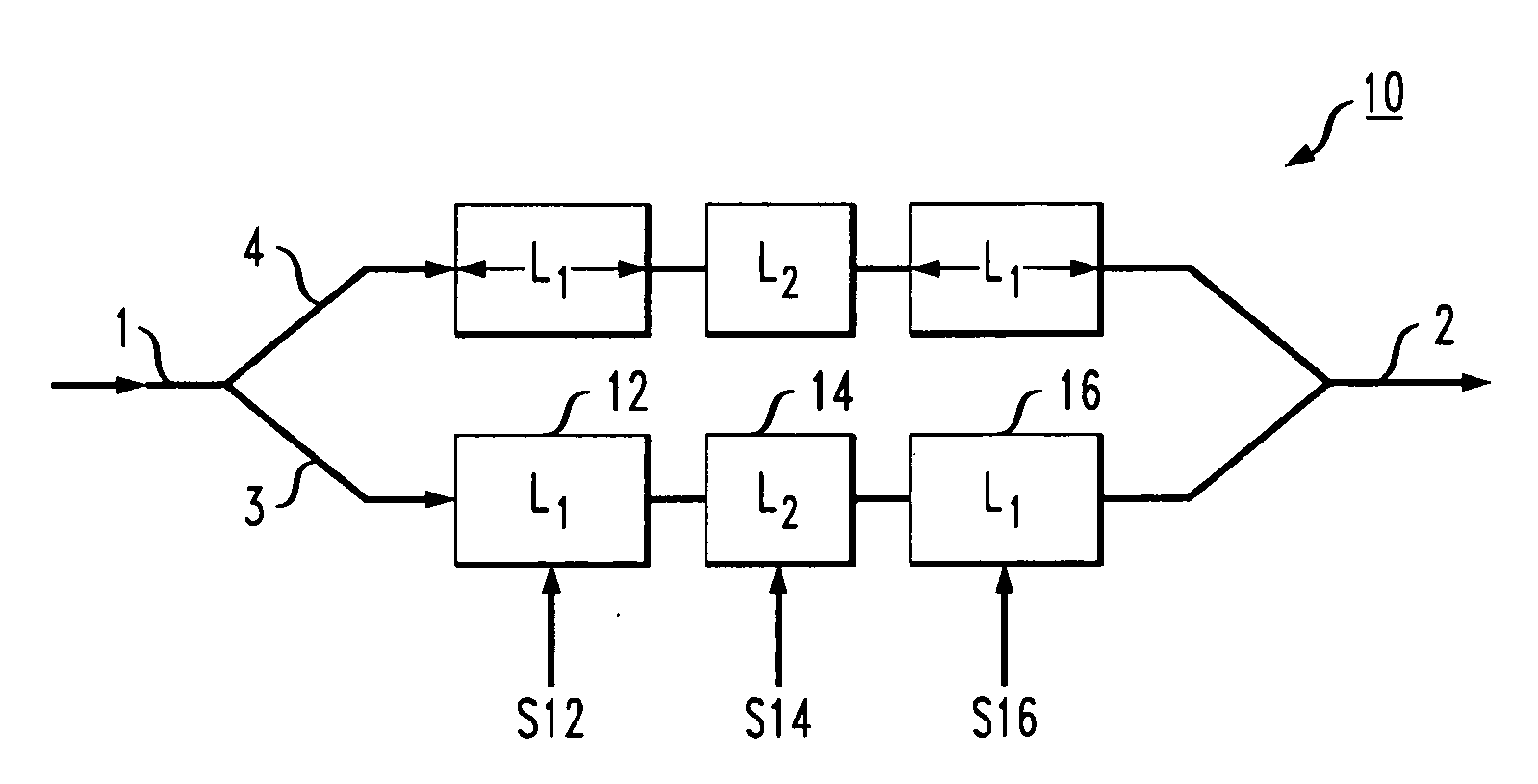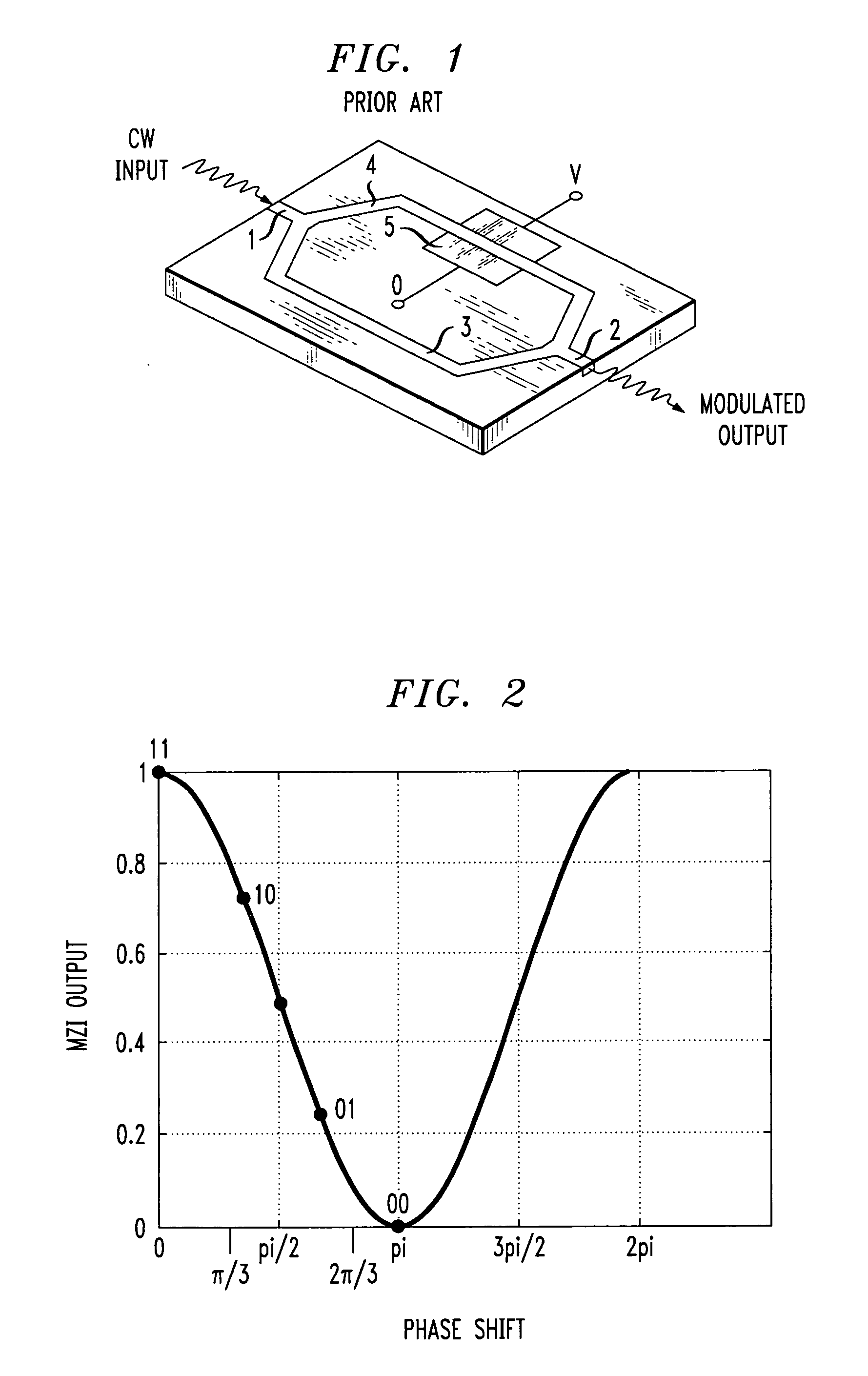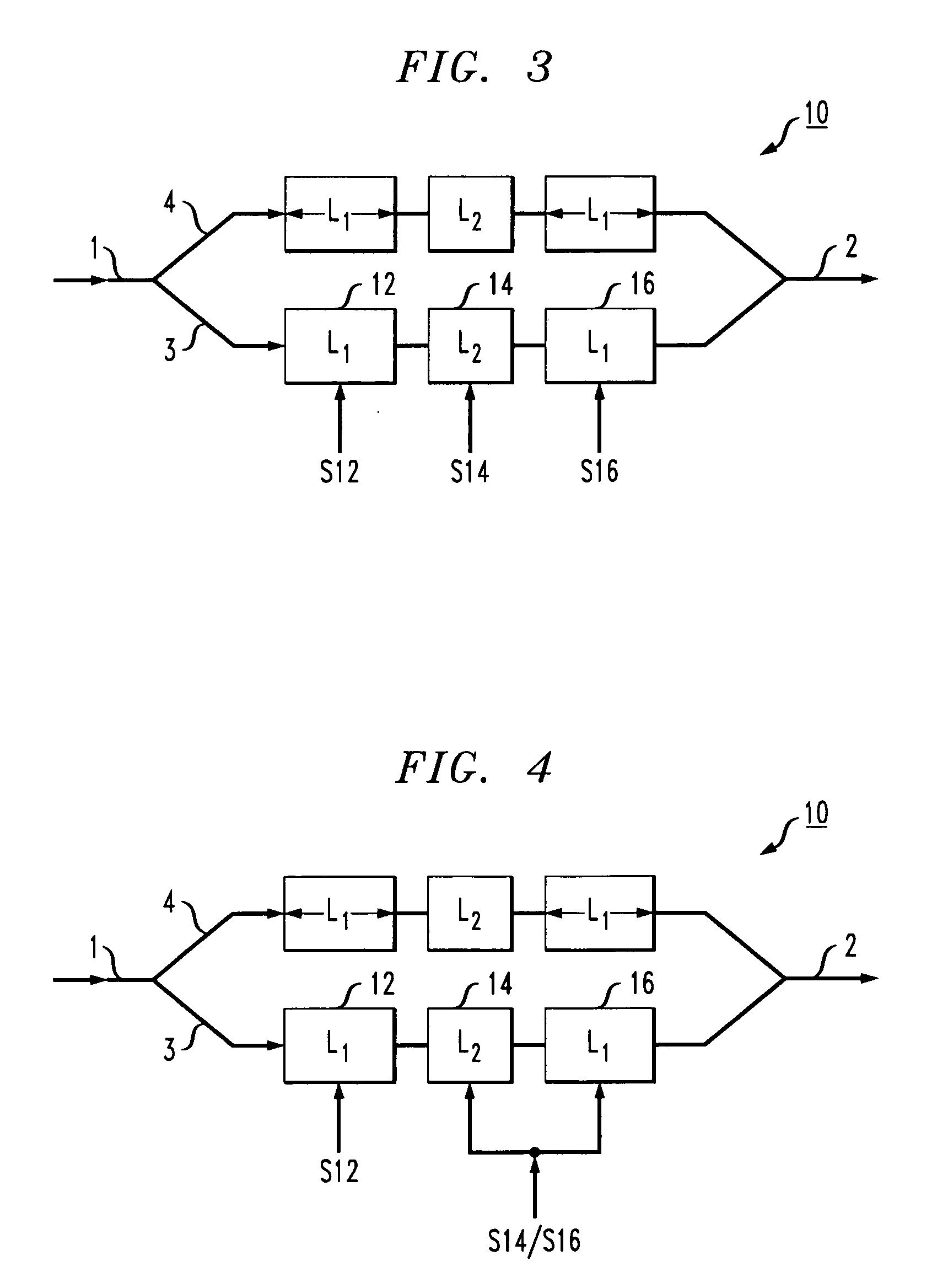Optical modulator utilizing multi-level signaling
a multi-level signaling and optical modulator technology, applied in optics, instruments, electrical equipment, etc., can solve the problems of increasing the data rate being transmitted over the fiber(s), not being able to use lithium niobate-based optical devices in such situations, and the dynamic behavior of the laser itself introduces distortion. , to achieve the effect of reducing the serial symbol ra
- Summary
- Abstract
- Description
- Claims
- Application Information
AI Technical Summary
Benefits of technology
Problems solved by technology
Method used
Image
Examples
Embodiment Construction
[0020]FIG. 1 illustrates an exemplary prior art Mach-Zehnder modulator that may be re-configured as described below to provide multi-level data transmission in accordance with the present invention. As shown, the prior art modulator comprises an input waveguide section 1 and an output waveguide section 2. A pair of waveguiding modulator arms 3 and 4 are shown and may be formed in one embodiment (i.e., an SOI-based embodiment) to include a capacitor-like structure.
[0021]In operation, an incoming continuous wave (CW) light signal from a laser source (not shown) is coupled into input waveguide section 1. The CW signal is thereafter split into a pair of waveguide arms 3 and 4. The application of an electrical drive signal to this modulator arm (or arms) will provide the desired phase shift to modulate the optical signal, forming a modulated optical output signal along output waveguide 2. A pair of electrodes 5 are illustrated in association with modulator arm 4 and used to provide the e...
PUM
| Property | Measurement | Unit |
|---|---|---|
| length | aaaaa | aaaaa |
| lengths | aaaaa | aaaaa |
| phase | aaaaa | aaaaa |
Abstract
Description
Claims
Application Information
 Login to View More
Login to View More - R&D
- Intellectual Property
- Life Sciences
- Materials
- Tech Scout
- Unparalleled Data Quality
- Higher Quality Content
- 60% Fewer Hallucinations
Browse by: Latest US Patents, China's latest patents, Technical Efficacy Thesaurus, Application Domain, Technology Topic, Popular Technical Reports.
© 2025 PatSnap. All rights reserved.Legal|Privacy policy|Modern Slavery Act Transparency Statement|Sitemap|About US| Contact US: help@patsnap.com



